Amazing Sagrada Familia Towers and Which One is The Best?

I am providing you with an authentic, on-the-ground perspective. Read my full Authenticity Guarantee disclaimer.
What are Sagrada Familia Towers?
The Sagrada Familia towers are architectural wonders and living testaments to history, faith, and artistic expression. Each tower tells a unique story, etched in stone and reaching towards the heavens.
From the Nativity Façade’s biblical narratives to the Passion Façade’s poignant depictions of Christ’s suffering, every detail is imbued with meaning and symbolism.
Check Availability for Sagrada Familia Towers
Tickets for today are usually sold out. Check the availability and price for your group below.
The Nativity Façade celebrates life, joy, and the birth of Jesus Christ. The four towers of this façade represent the Evangelists Matthew, Mark, Luke, and John, their sculptures conveying the essence of their gospel accounts.
The Passion Façade: A sad reflection on Christ’s crucifixion and the events leading up to it. The four towers here symbolise the Apostles James the Less, Bartholomew, Thomas, and Philip, their statues capturing the emotions of faith, doubt, and resilience.
The Glory Façade: Still under construction, this façade will be the largest and most imposing of the three. Its central tower, dedicated to Jesus Christ, will be the tallest of all, reaching a height of 172.5 metres. Surrounding towers will depict the Virgin Mary and various saints and martyrs.
The Tower of the Virgin Mary is a graceful and elegant structure, this tower is adorned with a star symbolising the Virgin Mary’s role as the “Star of the Sea.” It is a ray of hope and faith for all who behold it.
Each tower is a masterpiece in its own right, yet together, they form a harmonious whole, a testament to Gaudí’s visionary genius.
In exploring the history and symbolism of the Sagrada Familia towers, I’ll dive into the stories behind each sculpture, the meaning of each architectural element, and the cultural context that shaped their creation.
Architectural Innovation of Sagrada Familia Towers
The Sagrada Familia towers are Antoni Gaudí’s revolutionary approach to architecture, where nature’s forms and innovative engineering intertwine.
Architect’s deep understanding of geometry and meticulous observation of the natural world led to the development of groundbreaking construction techniques that continue to inspire architects and engineers today.
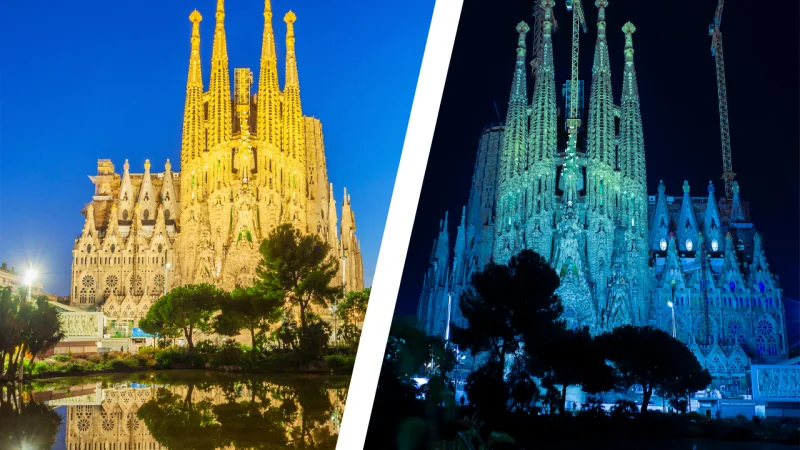
Gaudí drew inspiration from the catenary curve, the natural shape formed by a hanging chain, to create arches that distribute weight evenly and efficiently. He also employed hyperboloid structures, geometric shapes formed by rotating a hyperbola around an axis, to create solid and stable forms with minimal material.
His designs are characterised by ruled surfaces generated by the movement of straight lines. Often found in nature, like seashells and leaves, these surfaces create a sense of organic flow and harmony in the towers’ architecture.
He meticulously calculated the angles and proportions of each element, ensuring structural integrity while achieving a visually stunning aesthetic.
Gaudí experimented with various materials, from traditional stone to reinforced concrete, to achieve his desired forms and textures. He even used recycled materials like broken ceramic tiles to create colourful mosaics that adorned the towers’ facades.
The construction of the Sagrada Familia towers is a cooperative effort involving architects, engineers, artisans, and skilled workers.
Gaudí’s original models and drawings are meticulously studied and adapted using modern technology, ensuring his vision is faithfully realised while adhering to contemporary safety and construction standards.
By exploring the architectural design and construction techniques of the Sagrada Familia towers, we gain a deeper appreciation for Gaudí’s ingenuity and his profound impact on the world of architecture.
His legacy inspires innovation and creativity, pushing the boundaries of what is possible in building design.
Breathtaking Views from Sagrada Familia Towers
Ascending the Sagrada Familia towers is not merely a climb; it’s an ascension to a breathtaking vantage point that reveals Barcelona in all its glory.
Each tower offers a unique perspective, showcasing the city’s diverse neighbourhoods, architectural landmarks, and the sparkling Mediterranean Sea in the distance.
See our FAQ section at the end of this article to decide which tower is best or you.
Views from the Nativity Façade Towers
- Tower of St. Barnabas: Witness the intricate details of the Nativity Façade, with its sculptures depicting the birth of Jesus Christ and the joyous celebration that followed. Gaze upon the bustling streets of the Eixample district, with its grid-like layout and modernist buildings.
- Tower of St. Simon: Marvel at the colourful mosaics adorning the Nativity Façade, depicting scenes from the Bible and the natural world. Enjoy panoramic city centre views, including the iconic Plaça de Catalunya and the bustling Las Ramblas.
- Tower of St. Jude Thaddeus: Admire the spires and pinnacles of the Nativity Façade, reaching towards the heavens. Take in the sweeping views of the Gràcia neighbourhood, known for its bohemian charm and lively plazas.
- Tower of St. Matthew: Ascend to the highest point of the Nativity Façade and be rewarded with a 360-degree panorama of Barcelona. You can spot landmarks like the Sagrada Familia’s Passion Façade, Montjuïc Hill, and the Agbar Tower.
Views from the Passion Façade Towers
- Tower of St. James the Less: Observe the stark and evocative sculptures of the Passion Façade, depicting Christ’s crucifixion and the events leading up to it. Look out over the Eixample district, with its tree-lined avenues and elegant apartment buildings.
- Tower of St. Bartholomew: Admire the dramatic angles and sharp lines of the Passion Façade, a stark contrast to the more ornate Nativity Façade. Catch glimpses of the Gothic Quarter, with its mediaeval streets and historic cathedrals.
- Tower of St. Thomas: Gaze upon the imposing figure of Christ on the cross, a central element of the Passion Façade. Enjoy stunning views of the city’s northern neighbourhoods, including the Parc de la Ciutadella and the Arc de Triomf.
- Tower of St. Philip: Ascend to the top of the Passion Façade and be captivated by the panoramic views of Barcelona—spot landmarks like the Sagrada Familia’s Nativity Façade, the Tibidabo mountain, and the Olympic Stadium.
What Visitors Can Expect
Visitors to the Sagrada Familia towers can expect an unforgettable experience, combining breathtaking views with a deeper understanding of Gaudí’s architectural vision.
The towers offer a unique perspective on Barcelona, revealing its hidden gems and showcasing its Spanish energy.
Prepare to be inspired, amazed, and filled with a renewed appreciation for the beauty and complexity of this iconic landmark.
I can assure you visiting Sagrada Famila towers will create an impactful memory of your Sapin and Barcelona travel, you will be able to tell your grandchildren, many, many years from today.
Why Barcelona’s Unique Towers Attract Millions of Tourists Every Year?
The main reason is Sagrada Familia towers are more than just architectural marvels.
They’re an indelible part of Barcelona’s identity, reshaping its skyline and enriching its cultural heritage.
These iconic tower structures have become synonymous with the city and captivated visitors worldwide by their unique beauty and symbolic significance.
They are really something unique on the Earth and visiting Barceona without visiting Sagrada Famila Towes is like eating lunch without salt.
Iconic Towers of Barcelona
Before the Sagrada Familia towers began to rise, Barcelona’s skyline was dominated by the Gothic spires of the Cathedral of Santa Eulalia and the historic buildings of the Gothic Quarter.
However, as Gaudí’s visionary towers took shape, they gradually transformed the city’s silhouette, adding a modern and innovative touch to its traditional landscape.
Today, the Sagrada Familia towers are the undisputed stars of Barcelona’s skyline. Their distinctive shapes and intricate details stand out against the city’s diverse architectural backdrop, creating an awe-inspiring and thought-provoking visual spectacle.
A Symbol of Catalan Pride
The Sagrada Familia is more than just a church; it symbolises Catalan pride and identity. Gaudí, a devout Catholic and a proud Catalan, infused his faith and love for his homeland into every aspect of the basilica’s design.
The towers, with their surreal-detailed sculptures and symbolic motifs, reflect Catalonia’s rich cultural heritage and deep-rooted religious traditions.
The Sagrada Familia has become a rallying point for Catalans, symbolising their resilience and determination.
The basilica’s construction, which has lasted over a century, is a testament to the enduring spirit of the Catalan people and their unwavering commitment to preserving their cultural heritage.
A Magnet for Tourism and Economic Growth
The Sagrada Familia towers have become a significant tourist attraction, drawing millions of visitors annually. Their iconic status has helped to boost Barcelona’s economy, generating revenue through tourism, hospitality, and related industries.
The basilica has also become a hub for cultural events and activities, further enhancing its role as a cultural and economic powerhouse.
When to Visit Gaudi’s Towers
No mattter the timing, the breathtaking beauty of the Sagrada Familia towers through a curated collection of high-resolution images will capture their grandeur from every angle and perspective.
Beautiful Colors and Textures of Sagrada Familia Towers
Summer afternoon is a great time to visit, where vibrant mosaics depict biblical scenes and naturalistic motifs. Witness the play of light and shadow on the Passion Façade’s stark sculptures, evoking a sense of drama and emotion.
Impressive Heights and Magnificent Panoramas
When you ascend to the top of the towers, you will be rewarded with panoramic views of Barcelona that stretch to the horizon. Take photos of the city’s unique architecture, from the Gothic spires of the Cathedral of Santa Eulalia to the modern skyscrapers of the 21st century.
The Sagrada Familia’s Amazing Visuals at Night
You can even witness the magic of the Sagrada Familia as it transforms under the cloak of night. The illuminated towers create a breathtaking spectacle, casting a warm glow over the city and inviting visitors to experience its unique atmosphere.
Through this visual journey, you’ll better appreciate the Sagrada Familia’s architectural complexity, artistic beauty, and legacy as a symbol of faith, innovation, and human creativity.
Private Guided Tour of Sagrada Familia
When I became older, I realized that guided tours saved me a lot of time and effort in reading and researching places independently. This is why I recommend you book your private tour of Sagrada Familia.
Q: Are the towers worth it in Sagrada Familia?
A: Whether the towers are worth it depends on your priorities. They offer stunning views of Barcelona and a unique perspective of the Sagrada Familia itself. However, tickets are extra, and there can be lines.
Q: Which tower is better for sunset at Sagrada Familia?
A: The Nativity Tower faces west, so it’s the better choice for sunset views.
Q: Can you go up the towers of Sagrada Familia?
A: Yes, two towers are currently open for visitors: the Nativity Tower and the Passion Tower. Tickets are required and sell out fast, so booking in advance is crucial.
Q: How many towers are in Sagrada Familia (total)?
A: Upon completion, the Sagrada Familia will have 18 towers. Eight towers are finished, four on each facade (Nativity and Passion).
Q: What time of day is the best time for the light to be at Sagrada Familia?
A: Early morning or late afternoon offer the best lighting for capturing photos without harsh shadows.
Q: What is the difference between the Passion Facade Tower and the Nativity Facade Tower?
A: The Passion Tower is slightly taller and offers a wider city view. The Nativity Tower, designed by Gaudi himself, provides a closer look at the Nativity Facade details.
Q: How long do Sagrada Familia towers take?
A: The tower visit itself takes about 30-45 minutes, but with crowds and waiting for the elevator, it could be up to 1.5 hours.
Q: Can you do Sagrada Familia and Park Güell in one day?
A: Yes, it’s possible to visit both in a day, especially if you book your tickets in advance. Allow enough time for travel between locations.
Q: Can I enter Sagrada Familia in shorts?
A: It’s a church, so it’s best to dress modestly for your comfort. Avoid shorts, sleeveless shirts, or revealing clothing.
Q: Can you walk to Park Güell from Sagrada Familia?
A: It’s not the most pleasant walk (around 45 minutes uphill). Consider public transport, taxis, or bikes for a faster and easier commute.
Q: Which tower at Sagrada Familia is better?
A: The Passion Tower offers a higher vantage point, while the Nativity Tower showcases Gaudi’s architectural details. Choose based on your priorities.
Q: Do I need to bring headphones to Sagrada Familia?
A: Not necessarily. Audio guides are available for rent, but information can also be found online or in guidebooks.
Q: What is the best time of day to visit Sagrada Familia?
A: Early mornings or late afternoons offer better light and potentially fewer crowds.
Q: Is the guided tour at Sagrada Familia worth it?
A: Guided tours can provide valuable insights, especially if you’re interested in the history and symbolism behind the architecture.
Q: Is Sagrada Familia free on Sundays?
A: No, Sagrada Familia is never free. Ticket prices are the same throughout the week.
Q: How do you avoid lines at the Sagrada Familia?
A: Purchase your tickets online well in advance, especially during peak season. Consider visiting during off-peak hours or weekdays.
Q: Can you take photos in Sagrada Familia?
A: Yes, photography is allowed, but flash photography is not.
Q: What does Sagrada Familia mean in English?
A: Sagrada Familia translates to “Holy Family” in English.
Q: Is Gaudi still alive?
A: No, Antoni Gaudi, the architect of Sagrada Familia, passed away in 1926. Construction on the basilica is ongoing based on his plans.
Q: Which tower of Sagrada Familia is better to visit?
A: See the answer to ‘Which tower at Sagrada Familia is better?’
Q: Is it worth paying for Sagrada Familia Towers?
A: See the answer to “Are the towers worth it in Sagrada Familia?”
Q: How do I get to the nativity tower?
A: Both towers have designated entrances within the Sagrada Familia complex. Follow signage or ask staff for directions.
Q: Are there elevators for the towers at Sagrada Familia?
A: Yes, you go up in an elevator and take the stairs down.
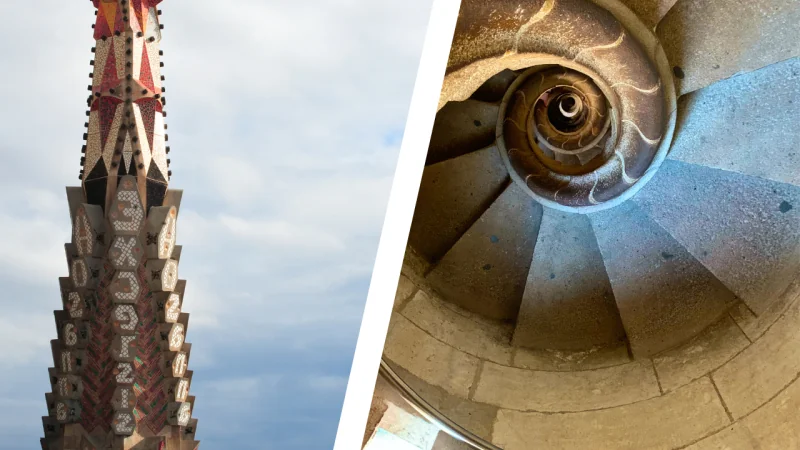

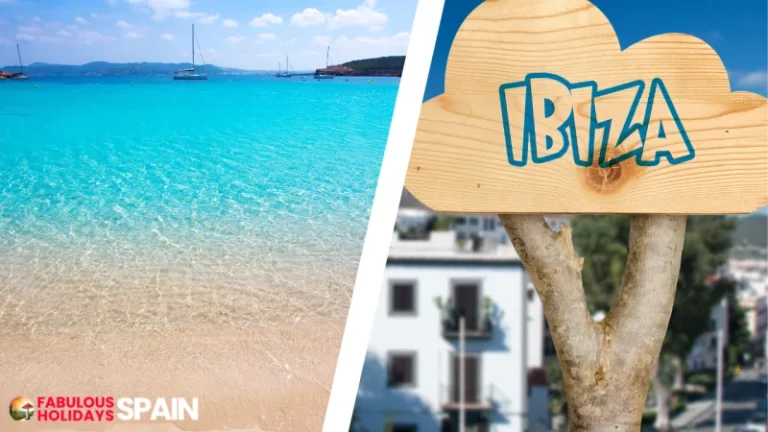

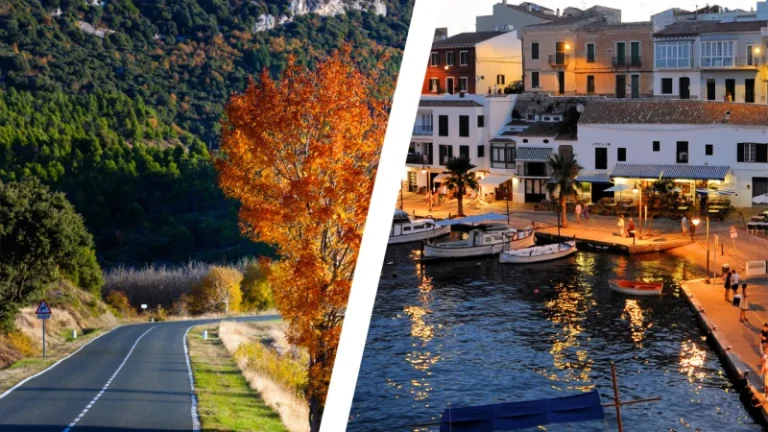
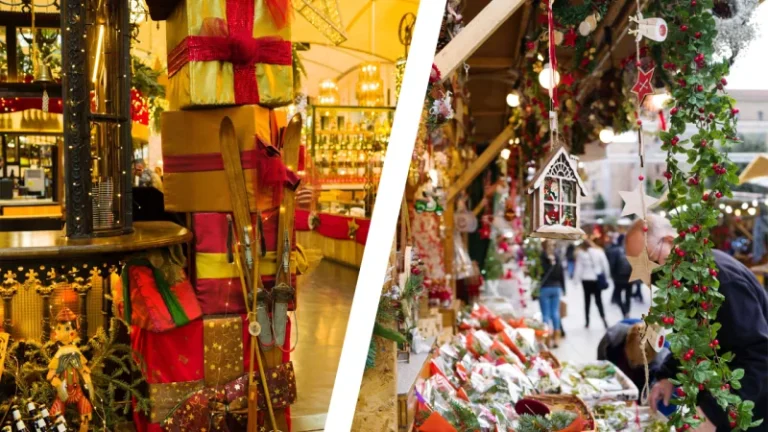
2 Comments